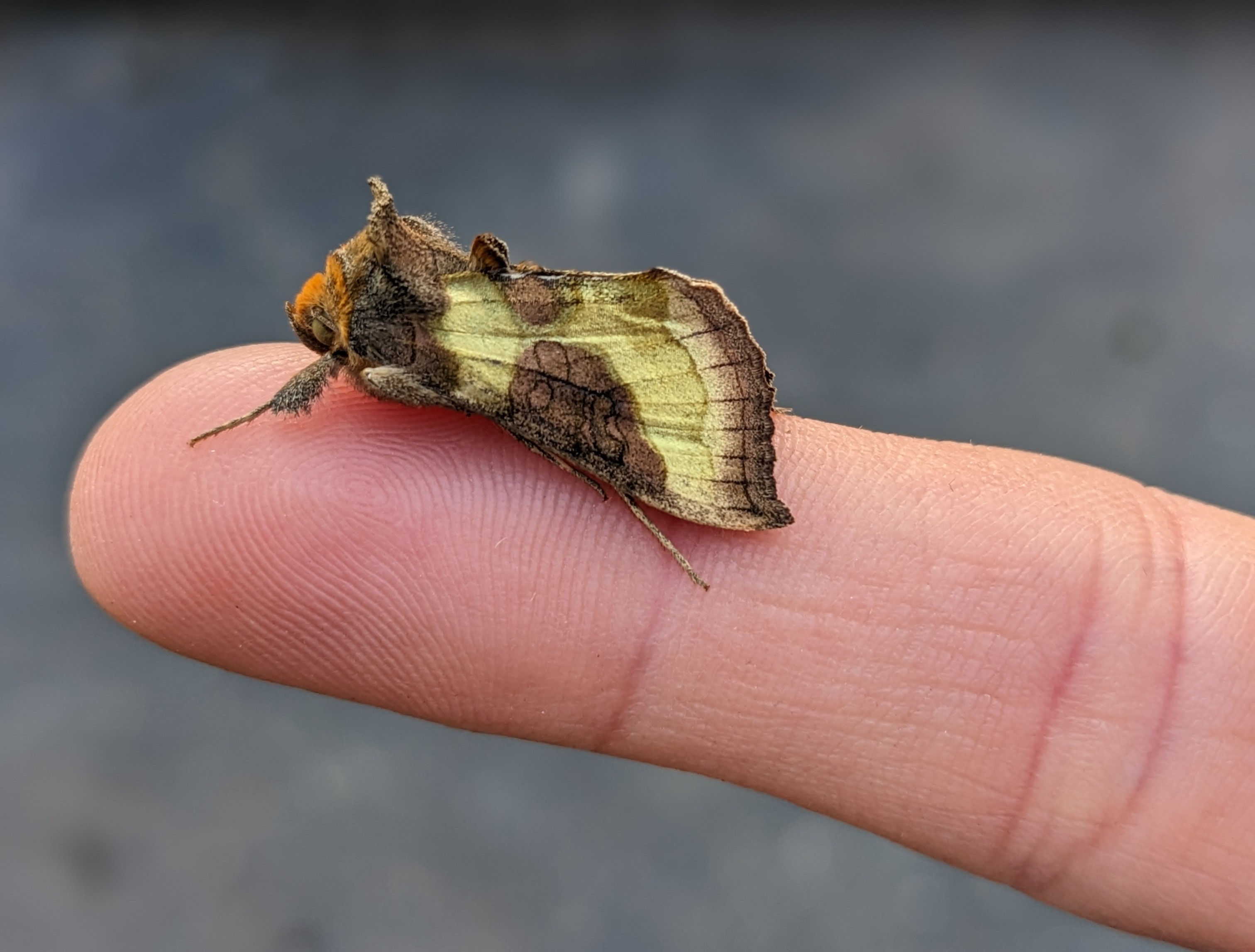Burnished Brass - Hannah Rowsell
Individual Giving Officer, Hannah Rowsell, shares her moth-trapping journey and what she and the team at Butterfly Conservation’s office in Dorset had in their moth trap in 2023.
As a newcomer to the world of moths, I had never come across a moth trap before starting in my role at Butterfly Conservation. In fact, I had no idea that they even existed! That all changed when, last May, a small group of us were shown how to use a trap at our office in Dorset. A large round plastic bowl with a clear plastic collar and a large light bulb perched on top. Inside were egg boxes stacked at angles creating hiding places for our moths. Moth traps are used by those who wish to safely monitor and record the species of moths flying at night in their local area. The traps are widely used in conservation but were new to many of us working in the office. Once turned on, the moths are attracted to the light throughout the night and come to rest inside the safety of the egg boxes. In the daylight when the moths are drowsy, they can be safely handled, recorded, and then released into a suitable location.
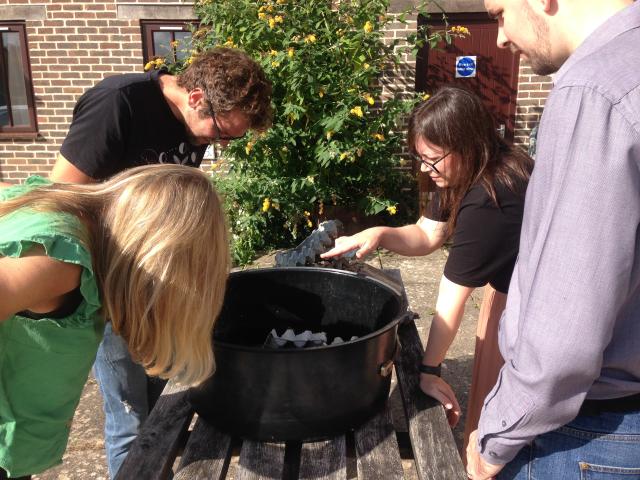
Once we were confident with how to use the trap and safely handle the moths, our moth trapping journey began! The first trap we ran in June was extremely successful with 44 moths counted, and 32 different species. The range in size and colour was truly extraordinary. Identifying all the different species did take some time, as our small group were all moth amateurs. The UK is home to just 57 species of resident butterfly and two migrants, whereas you can find over 2,500 species of moths, ranging from tiny micro moths up to large hawk-moths.
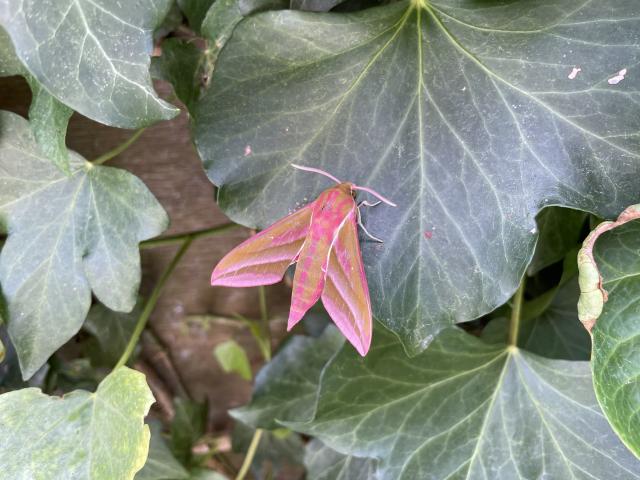
As June continued and the weather started to warm up, we started to see different species in the trap, brighter and larger than we had seen before. The summer moths truly dispelled the myth that moths are brown and boring! We saw stripes and spots and a whole spectrum of colours including gold, pink, red, orange, and yellow!
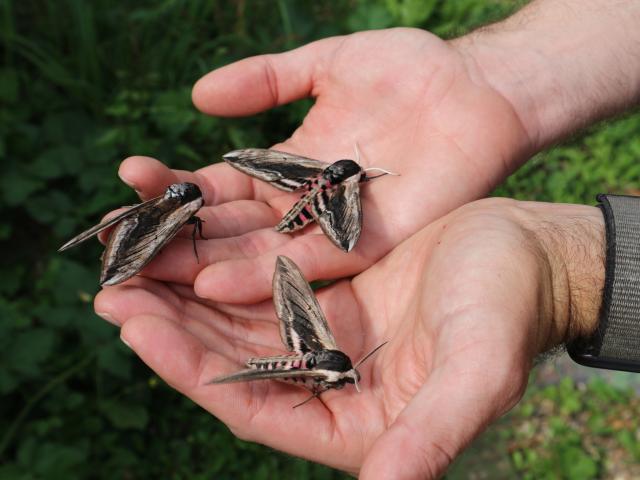
One highlight for our IT Officer Darren was collecting a handful of Privet Hawk-moths, the UK’s largest resident hawk-moth, from one trap. Darren said "To be able to step away from the desk and out of my comfort zone to learn about how to ID and handle the moths has been great.” Darren has become one of our best sources of identifications and is well and truly a converted moth fan!
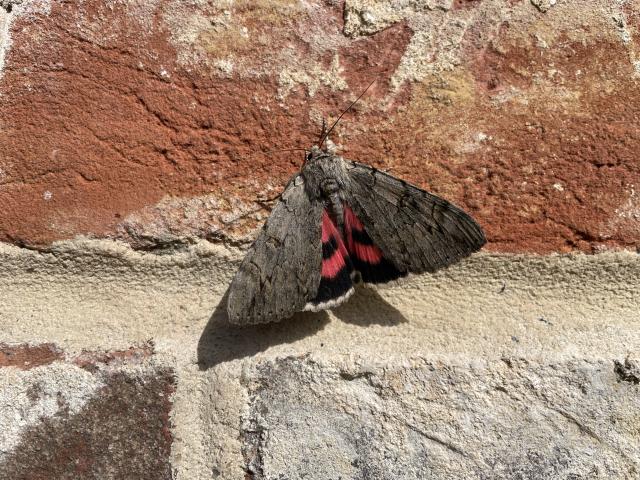
With a wet July and August there were not as many moth mornings as we would have liked, and by September the amount of moths flying was decreasing. Moving into autumn we began to see moths that were orange, brown and yellow, to camouflage with their changing environment. The moths on the wing throughout the year are constantly changing and each month brings new surprises, including the odd rare, exciting migrant. After our first summer and autumn of mothing, the year ended on a high with 17 fluffy December Moths recorded before Christmas. Amelie, PA at Butterfly Conservation said “Moth trapping has been an incredible insight into the nocturnal world of moths. I love discovering new species and witnessing the changes throughout the seasons.".
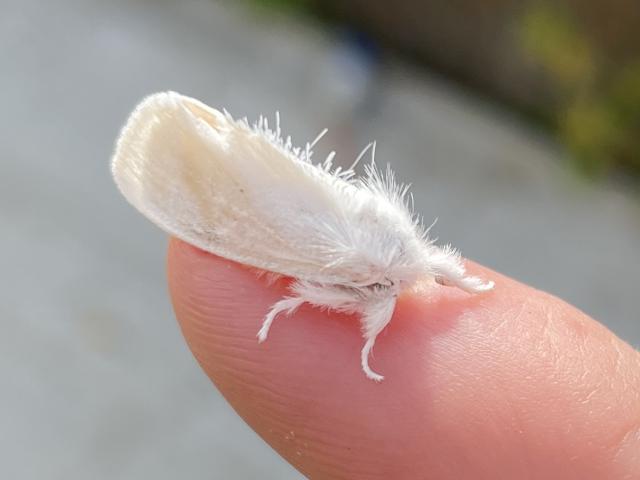
For one of our group, Denise, learning about the moths has even helped her overcome a fear. Denise said “It has cured my phobia around moths. So much so that I can even handle the non-fluttery ones!” Not only this, but she has also inspired her grandson who we hope will be one of a new generation of lepidopterists.
With the cold weather returning, there will be a lull in the moths appearing in our trap, but I am very excited for what spring will bring on the wing. Spotting moths throughout the year is incredibly rewarding, and once you get started, I do warn you, it is very addictive!
Hannah Rowsell
Individual Giving Officer, Butterfly Conservation
Discover which moths you might spot throughout the year; sign up for your FREE Moths by Month calendar today!


